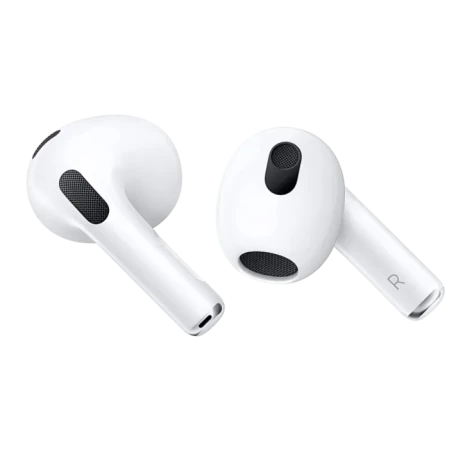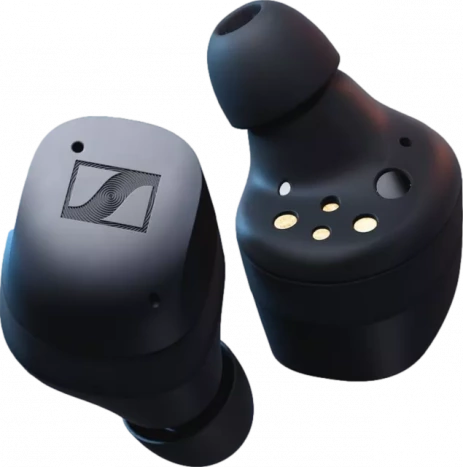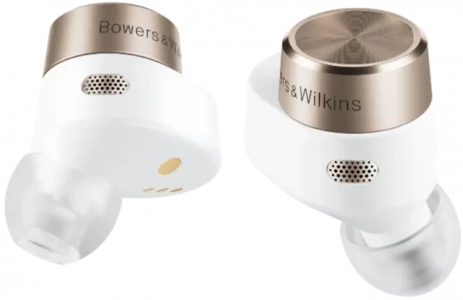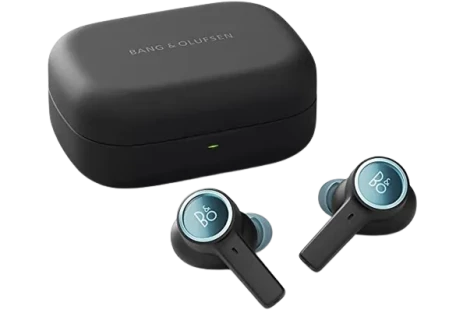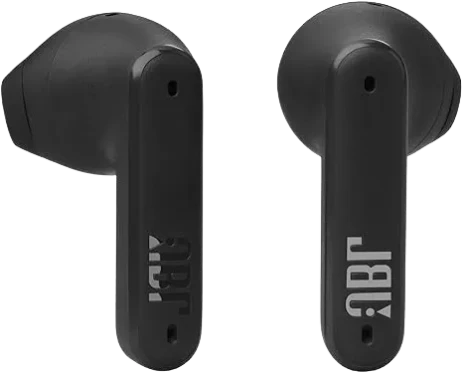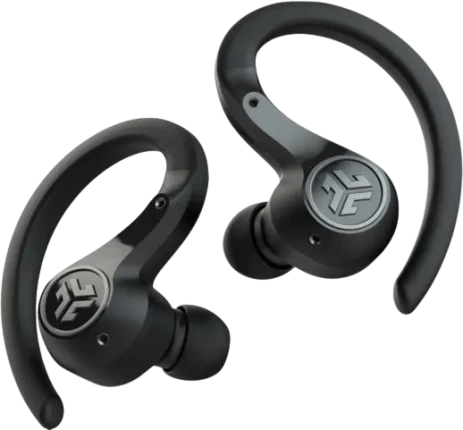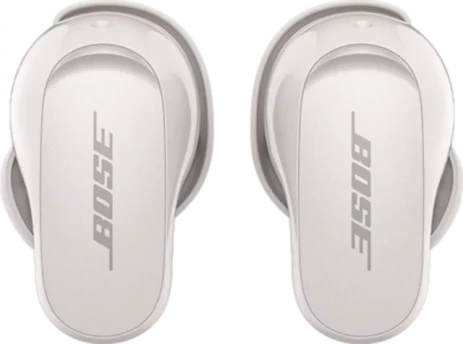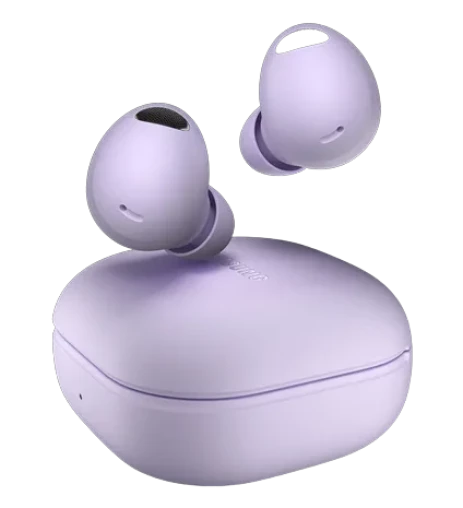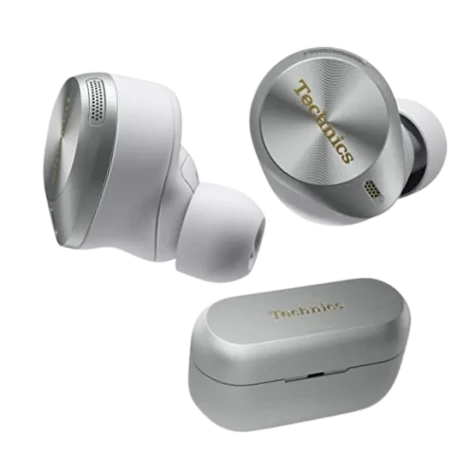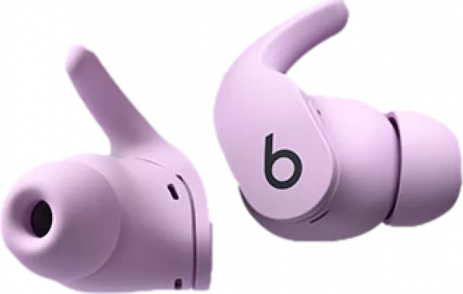Ingress protection ratings refer to the level of protection offered by an enclosure, against solids and water. The letters 'IP' are followed by two values The first value refers to protection against solids say dust, followed by the one that refers to protection against liquids (sweat).
Having a value of IPX4, the Apple AirPods (3rd Gen)'s rating is read as, the first number of X denotes that no data available to specify a protection rating, and the second value of 4 means that they can withstand low pressure spray similar to that of a shower head when tilted at 180° for 10 minutes. The Apple AirPods (3rd Gen) have a weight of 8.56g . We take in account a lower weight best for the reason that lighter devices are more comfortable to transport.
True wireless devices have no cables linking any part of the device together, Apple AirPods (3rd Gen) are true wireless for this matter since they don't have wires. This is a key difference since wireless earbuds have cables linking the 2 earbuds .
Apple AirPods (3rd Gen) are resistant to sweat
Apple AirPods (3rd Gen) have stereo speakers, devices with stereo speakers deliver sound from independent channels on both left and right sides, this creates a richer sound and a better listening experience. ANC makes use of more advanced kind of tech to actively cancel noise.
How it works, it detects and analyzes the sound pattern outside and inside the earbud and inverts the soundwaves to counter it. In simple terms, it's like taking +1 (sound from your surrounding) then producing -1 (counter sound by the device) giving 0 which results in a reduced level of noise.
The Apple AirPods (3rd Gen) have Active Noise Cancellation enabling you to listen at lower levels of volume, good for your ears since you don't need to crank up the earbuds volume to overcome background noise.
The Apple AirPods (3rd Gen) stay tightly in place, creating an acoustic seal that tones down background noise and also prevents the device sound from leaking out .
The Apple AirPods (3rd Gen) driver unit is 11mm in diameter, the bigger the unit the more powerful, therefor producing better bass. A driver unit is basically a mini speaker that produces sound in the earbuds, its size corellates with the sound produced by the earbuds. The Apple AirPods (3rd Gen)'s lowest frequency is at 10Hz, low-frequency response inidcates how well a particular audio device generates low recognizable frequencies and if it alters the signal on its way through.
Apple AirPods (3rd Gen)'s highest frequency is at 20,000Hz, high-frequency response tells how well a particular audio device produces high human frequencies and if it changes to the signal on its way through. The Apple AirPods (3rd Gen)'s battery life is 6 hours, these last longer than 5 hours of listening which is considered average for a single charge. A device's battery life is given by the manufacturer, and with longer battery life, you get to use it for longer and requires fewer chargings.
This is given by the manufacturer, and Apple AirPods (3rd Gen)'s case is said to have a charge of 30 hours. A charging case with a longer battery life enables you to recharge your earbuds on the go many times before having to recharge the case itself. It requires 0.3 hours to fully charge the Apple AirPods (3rd Gen)'s battery.
It is recommended to charge fully the battery before using the earbuds when they have been in storage for long periods. Apple AirPods (3rd Gen), the device supports wireless charging. To charge the device, you simply place down on a compatible charging pad.
The Apple AirPods (3rd Gen) have a battery level indicator, an indicator notifies you when the earbuds has a low battery. Its lights indicate the charging state of your device and charging case. Apple AirPods (3rd Gen) have Bluetooth version of 5, Bluetooth is a wireless technology standard that enables data movement between devices placed in range, using short-wavelength, ultra-high frequency radio waves.
The Apple AirPods (3rd Gen) have a 10meters distance to connect via Bluetooth. Apple AirPods (3rd Gen) support AAC, a codec that is used for Bluetooth audio. It supports 24-bit audio at 250kbps.
Because it uses psychoacoustic modeling, it can provide better results than other codecs at a similar bit rate.
Being the highest quality codec that any Bluetooth-supporting Apple product supports, the Apple AirPods (3rd Gen) will work fine with your iPhone. If you are planning on using these with Android you need to pay even closer attention to codec support for if they only have AAC they won't provide the best audio quality possible, ensure that they also support aptX HD, LDAC, or LHDC as well.
The Apple AirPods (3rd Gen) have 6 microphones. Apple AirPods (3rd Gen) use a noise-canceling type of microphone, these microphones are made to filter out noise from the earbuds' sound. Apple AirPods (3rd Gen) have in/on-ear detection, the sensors in the earbuds can detect when they are removed from your ears so that the music is paused.
When lost in a room, or can't be found in your bag, the Apple AirPods (3rd Gen) support the find earbuds feature. The Apple AirPods (3rd Gen) support fast charging. Most often, technologies like Qualcomm’s Quick Charge, are used to lower the amount of time it takes to fully charge a device.
Apple AirPods (3rd Gen) have a multipoint of 2 connections, the multipoint feature allows you to link to more than one Bluetooth device and switch between them. For example, you can switch calls from one device to another without manually disconnect and reconnect. The Apple AirPods (3rd Gen) have a mute function, they have the feature to mute/unmute a conversation directly from the earbuds.
With the Apple AirPods (3rd Gen), so you can easily access the volume control, pause, play, mute, etc whichever functions are supported on the earbuds. Apple AirPods (3rd Gen) have a warranty period of 1 Years, the period of time that warrant free repair and adjustment services in case of a malfunction occurring under normal use following instruction manuals. Apple AirPods (3rd Gen) have voice prompts.
Automatically receive information through audio messages, say if there is a problem with the connection. The Apple AirPods (3rd Gen) come with a special pouch. Carrying earbuds without a case, or putting them in your pockets without a cover can easily put them at risk of getting damaged.
